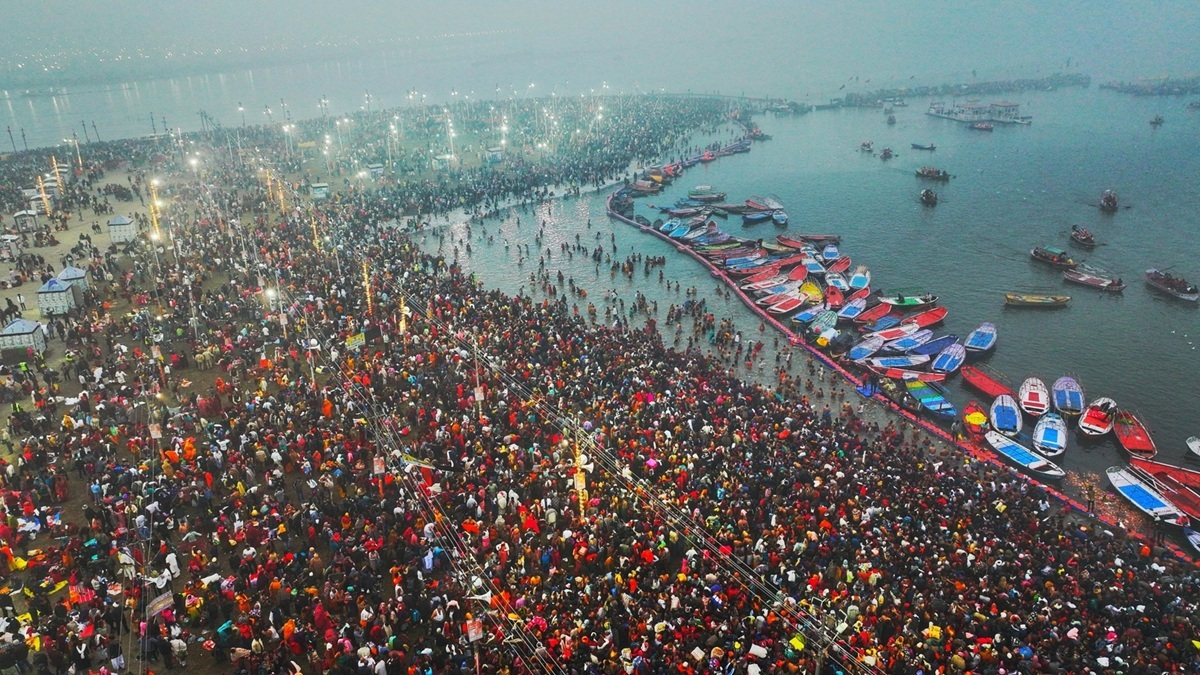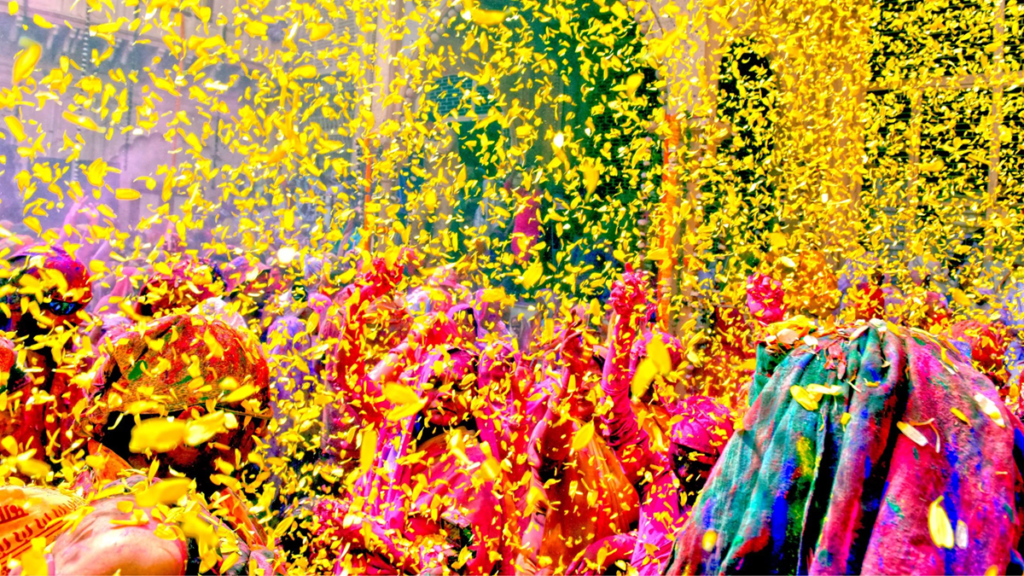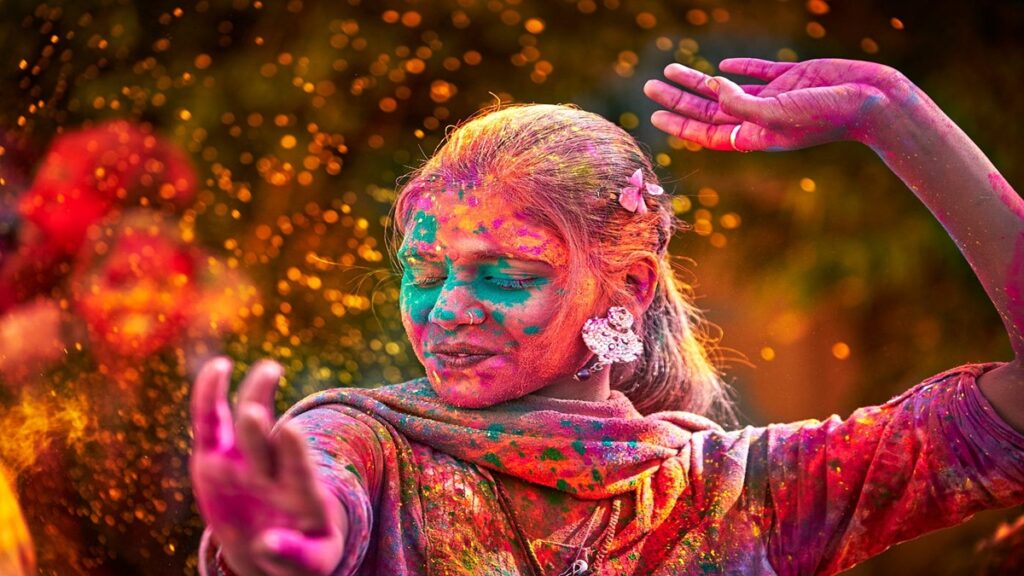Table of Content
Contents
Kumbh Mela is the world’s largest religious gathering, held once every 12 years in India, which displays the spiritual and cultural heritage, generosity, grandeur, and antiquity of India. Kumbh Mela is organized once every 12 years at four holy places in India (Prayagraj, Haridwar, Ujjain, and Nashik) in turn, which becomes the center of attraction among millions of devotees from all over the country and the world. In Kumbh Mela, a large number of sadhus, saints, and devotees come to take a bath in the holy river (kumbh snan) at the Kumbh place with the desire of purification, spiritual development, and divine blessings. But what is the kumbh mela significance from a religious, spiritual, and scientific point of view? We will shed light on all kinds of aspects in this article. This article will help you to know all about Kumbh Mela that you need to know.
The Mythological Origins of Kumbh Mela
The Kumbh Mela has its origins in Hindu mythology, particularly the story of Samudra Manthan (churning of the ocean). According to ancient texts, gods (Devas) and demons (Asuras) churned the ocean to obtain the nectar of immortality (amrita). A cosmic struggle between the two forces ensued when the Amrit Kalash appeared. During the cosmic fight, Lord Vishnu, disguised as Mohini, seized the pot to make sure that the nectar did not fall into the hands of the demons. But during this conflict, a few droplets of nectar fell in four different locations on Earth: Prayagraj, Haridwar, Ujjain, and Nashik. These four holy places have been designated as holy Kumbh Mela places, where the Kumbh festival celebration is held. The Kumbh Mela occurs once every 12 years. These locations host the biggest celebration of the Kumbh festival, which attracts millions of pilgrims from India and other countries.
The Kumbh festival commemorates this divine event, and pilgrims believe that bathing in the sacred rivers (khumbh snan) at these locations washes away sins and grants liberation from the cycle of birth and death.
The Significance of Kumbh Mela
One of the world’s oldest and most significant religious gatherings, the Kumbh Mela is held at four holy sites every 12 years. Several Hindu texts, including the Puranas, make reference to the festival, which has a long history that dates back thousands of years. Millions of pilgrims, saints, and tourists assemble to participate in the event, which is thought to be the largest congregation of humanity.

1. Spiritual Significance
Kumbh Mela has not only religious but also spiritual importance. The concept behind Kumbh Mela is that devotees who take a bath in the holy river at Kumbh Places during the auspicious time of the Kumbh festival are freed from their past sins and are liberated from the cycle of rebirth. According to Hindu scriptures, Kumbh Snan purifies the soul and gives salvation or liberation from the cycle of birth and death. Kumbh attracts sages, saints, scholars, and seekers from all over the country due to its importance. During Kumbh Mela, all the religious Akharas and religious peeths of the country mark their presence and participate in serious spiritual conversations, discourses, and meditation. This gathering becomes a defining event for those who are interested in knowing spiritual significance about Kumbh mela. People travel long distances to reach Kumbh Mela for Kumbh snan because Kumbh Mela is considered to be the most suitable time for spiritual advancement because at this time the divine cosmic energy is at its highest level.
2. Astrological Significance
The timing of the Kumbh Mela is determined by astrological alignments, ensuring that it occurs during periods of tremendous spiritual energy. It is thought that the holy rivers at the selected Kumbh places become charged with divine energy when the planets Jupiter (Guru), the Sun, and the Moon align in particular zodiac signs. This is the most favorable time to bathe and attain purification. The powerful spiritual ethos of Hinduism is embodied in the grandeur of the Kumbh Mela, which unites people from all walks of the timing and location of the Kumbh Mela are determined by specific planetary alignments with the help of astrology to ensure that it is the best time for spiritual energy. According to astrology, the timing and location of the Kumbh Mela is determined by the alignment of the planets Jupiter (Guru), Sun, and Moon in specific zodiac signs.
- Prayag (Triveni Sangam): When Jupiter in Aries, the Sun and Moon in Capricorn; or Jupiter in Taurus, Sun in Capricorn.
- Haridwar (Ganga River): When Jupiter in Aquarius, Sun in Aries
- Ujjain (Shipra River): When Jupiter in Leo and Sun in Aries; or Jupiter, Sun and Moon in Libra on Kartik Amavasya
- Nashik (Godavari River): When Jupiter in Leo; or Jupiter, Sun and Moon enter Cancer on Lunar Conjunction
According to astrologers and Hindu scriptures, the holy rivers at the selected Kumbh places are filled with divine energy at these times. Due to which it is considered the most auspicious time for bathing, self-purification, and spiritual upliftment. The powerful spiritual ethos of Hinduism is embodied in the grandeur of the Kumbh Mela, which unites people from all walks of life in search of heavenly benefits and moksha.
3. Social and Cultural Impact
The Kumbh Festival serves as a grand confluence of cultures, sects, and spiritual traditions. The Kumbh Mela provides a rare platform for spiritual conversations and religious debates between scholars, saints, and devotees from various backgrounds associated with Sanatan Dharma from across the country and the world. In the Kumbh Mela, the saints and sages of all the religious Akhadas (monastic sects) and religious peeths of the country stay at the Kumbh mela place for a month, which is called Kalpavas in Hindu scriptures. It is also a meeting place for various Akhadas (monastic sects), where philosophical and religious discussions take place. During this time, they participate in serious spiritual conversations, discourses, and meditation. And play an important role in providing the right direction to the society from a religious and spiritual point of view.
The Four Sacred Kumbh Mela Places
The Kumbh Mela revolves around four holy sites, each of which has its own unique religious and historical significance:
- Prayagraj (Allahabad) – The Triveni Sangam (the confluence of the Ganga, Yamuna and the mythical Saraswati) is considered the most auspicious site for bathing.
- Haridwar – Located on the banks of the Ganges, Haridwar is where the river descends from the Himalayas. Linked to ancient Vedic traditions and revered as the gateway of the gods.
- Ujjain – Located on the banks of the Shipra River, the site is associated with Lord Shiva and the famous Mahakaleshwar Jyotirlinga. Ujjain has been a centre of Hindu spirituality, astrology and education for centuries.
- Nashik – On the banks of the Godavari River, Nashik is associated with the Ramayana and Lord Rama’s exile period.
Kumbh Mela is held at each of these four holy places every 12 years. Ardha Kumbh is held every 6 years, Purna Kumbh is held every 12 years, and Maha Kumbh is held every 144 years.
Rituals and Traditions of Kumbh Mela

1. Shahi Snan (Royal Bath)
Shahi Snan is the most important tradition and ritual of the Kumbh Mela. In this, thousands of Sadhus, Saints and Naga Sadhus from various Akhadas take a bath in the holy river at the Kumbh Sthal. Thousands of Sadhus, Naga Sadhus and Saints march together towards the holy river for a holy bath. It is one of the most awe-inspiring scenes of the Kumbh Mela.
2. Peshwai Procession
A grand procession is taken out on the arrival of Akharas and Shankaracharya at the Kumbh Mela, in which decorated elephants, horses, chariots and saints singing bhajans formally enter the Kumbh sthal (kumbh place) with a divine atmosphere.
3. Kalpavas
Sadhus, saints and devotees stay on the banks of the holy river at the Kumbh places during the Kumbh Mela and follow strict spiritual disciplines like meditation, fasting and prayers for a whole month, this is called Kalpvas in Hindu scriptures and beliefs and the devotee staying there is addressed as Kalpvasi.
4. Darshan of Sadhus
The Kumbh Mela provides a rare opportunity to meet various sects of sadhus and understand their traditions. Devotees also have the opportunity to meet Shankaracharya, Naga Sadhus, famous ascetics, and devout people at one place.
5. Ganga Aarti and Religious Discourses
The Kumbh Mela witnesses grand Ganga Aarti every evening and spiritual discourses by saints and sages that attract devotees seeking enlightenment.
The Cultural and Social Impact of Kumbh Mela
1. Unity in Diversity
Kumbh Mela is a confluence of all the sects and beliefs of Sanatan Dharma, in which people of different backgrounds, languages and traditions take bath together without any discrimination and celebrate faith which strengthens the ideology of unity in diversity.
2. Spiritual Tourism and Economy
From the tourism and economy point of view, Kumbh Mela leads to a great increase in tourism. Crores of people come from all over the country for Kumbh bath, which provides employment to local people, traders, and vendors, which has a positive impact on the local and country’s economy.
3. Platform for Knowledge Sharing
Kumbh Mela historically serves as a platform for the exchange of knowledge among sages, scholars, and philosophers, promoting a sense of intense spiritual and intellectual discussions among scholars.
The Global Recognition of Kumbh Mela
UNESCO has awarded the Kumbh Mela for its cultural and spiritual grandeur। In 2017, UNESCO recognized the Kumbh Mela’s importance as a global spiritual event and listed it as an intangible cultural heritage of humanity.
Kumbh Mela is not just a festival; it is an eternal spiritual tradition that continues to fascinate and inspire people. Whether a devotee seeking salvation or a traveler drawn by the mysteries of Sanatan Dharma, the Kumbh Mela offers an experience that leaves an indelible mark on the soul.After understanding all about Kumbh Mela—its mythology, traditions, kumbh mela significance, and impact—we can say that Kumbh Mela is truly a unique, divine, and grand gathering.
If you ever get the chance, do visit Kumbh Mela once. Witnessing this gathering firsthand will give you an unparalleled experience – one that demonstrates the power of devotion, the importance of tradition, and the eternal connection between the individual soul and the divine that reflects the essence of faith, devotion, and unity.









